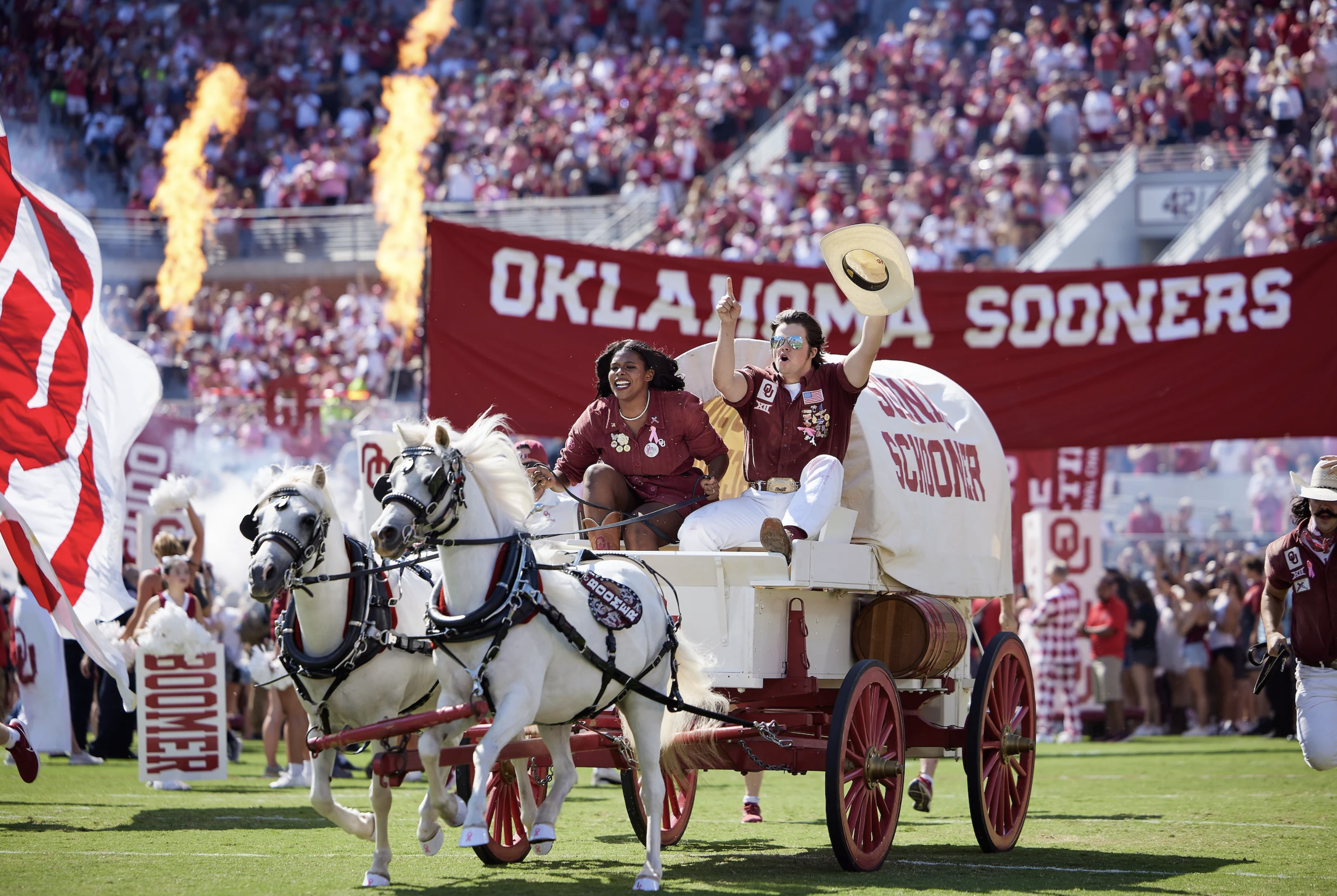
THE UNIVERSITY OF OKLAHOMA was established before Oklahoma became a state. The University was founded by audacious dreamers – like the first President, David Ross Boyd, who arrived on the open prairie and declared, "What possibilities!" The founders of OU believed in the promise of higher education – in its unique ability to cultivate engaged citizens, to create opportunity and prosperity, and to nurture a flourishing society. They believed in the power of higher education to change lives.
Today, higher education is more important to the future of Oklahoma than ever. In a bitterly polarized society, universities serve as rare places of genuine community, where individuals from all backgrounds engage in civic education and democratic dialogue. In an era of rapid technological upheaval, universities are engines of innovation and economic growth, equipping students for lifelong success. In an increasingly competitive global landscape, access to a world-class, research-driven education is not a luxury – it is a necessity.




In 2020, the University of Oklahoma adopted the “Lead On, University” Strategic Plan. The Plan was crafted with boldness and honesty. It has guided the University through a period of transformation and growth. As many institutions across the country struggle with declining enrollments, we have defied the trend, achieving a 26.5% increase in our freshman class since fall 2020. We have made an OU degree more affordable today than it was 5 years ago, growing need-based aid by 38% and decreasing the average annual cost for Oklahoma residents by 28%. In health care, we established Oklahoma’s first and only comprehensive academic health system, OU Health. In the rapidly shifting world of collegiate athletics, we have seized control of our own destiny.
But we are not done. From its inception, OU has been driven by an unrelenting aspiration to rise higher and achieve more. Today, the goal of ascending to the top tier of public research universities is within reach. Yet, with great opportunity comes great challenge. The next phase of our journey requires us to confront emerging obstacles with the same boldness and honesty that shaped our original Plan.

There are approximately 4,000 degree-granting institutions of higher education in the United States, with over 40 colleges and universities in Oklahoma alone. In this crowded and competitive landscape, OU must define its place with clarity. Our identity and aspirations are marked by specific coordinates, the intersection of three values that locate us at a precise point on the map:
As Oklahoma’s flagship institution, OU is committed to academic excellence, student success, life-changing research, and leading-edge health care. We provide students with a unique experience that blends the vast resources of a large public university with the close-knit environment of a residential community. Our ambition is to rank among the nation’s top public research universities, as measured by membership in the prestigious Association of American Universities (AAU), the gold standard of academic achievement.
As a public university, OU has a fundamental responsibility to be a place of opportunity. OU must be accessible to any student with the drive, talent, and determination to excel at a top institution. We are committed to affordability, ensuring that financial barriers do not stand in the way.
The University of Oklahoma exists to serve the people of this state. No institution is better positioned to shape the future of Oklahoma’s workforce, educational outcomes, health care, and economic prosperity. By aiming to set the bar for how a university provides for and invests in strong working relationships across government, industry, Tribal Nations, and community organizations, OU is committed to helping transform bold ideas into real, lasting impact across the state.


We also recognize that the biggest challenges faced by the state of Oklahoma – diversifying the economy for the 21st century, uplifting the K-12 education system, and improving health outcomes – also represent challenges, opportunities, and even obligations for the University. No institution has greater potential to shape the future of the state.
Our Strategic Plan directly confronts these realities. Every university has a limited number of key levers it can pull to shape its future. The refreshed Lead On Strategic Plan asks all OU stakeholders to commit decisively to these strategic choices:


Despite demographic trends, we need to be among the universities that expand enrollment while delivering leading-edge academic programs and an exceptional collegiate experience. This requires a prestigious and respected brand, high graduation rates, successful career outcomes, and low student debt.




